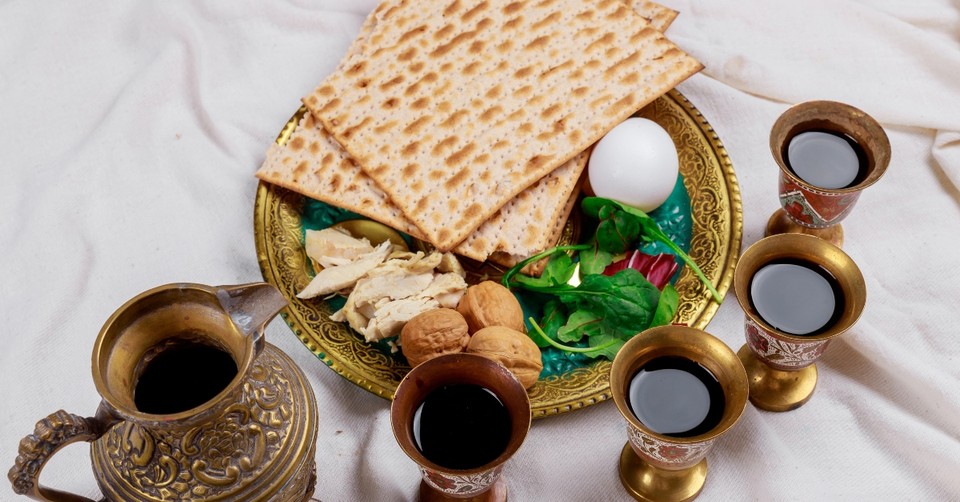What is the Feast of Unleavened Bread in the Bible?

Preordained as a message of hope for desperate slaves, the Feast of Unleavened Bread became a symbol of deliverance and mercy. “This is a day you are to commemorate; for the generations to come, you shall celebrate it as a festival to the Lord.” (Exodus 12:14)
What Happened During the Feast of Unleavened Bread?
God had heard the cries of hurting people and met them in their need. Now, liberation lay within their grasp. Forced into labor for more than four hundred years, God promised the Israelites freedom if they covered their doorframes with the blood of a lamb. Offering words of praise and thanksgiving from the Torah, men, and women held trembling children in their arms as screams erupted across the city.
Pharoah, unwilling to release those who contributed to his comfort, finally relented at the passing of his own child, and God’s chosen escaped with “their dough before it was leavened.” (Exodus 12:34)
Later, Old Testament law required a weeklong celebration that focused on eating unleavened bread. Leaven even had to be removed from the home, and if a person ate leavened bread, he or she was excommunicated. On either side of the feast, people gathered for worship. In recognition of the feast, people were not allowed to work on the first or final day of the Feast of Unleavened Bread.
Where Does the Bible Talk About the Feast of Unleavened Bread?
The first mention of the Feast of Unleavened Bread is in Exodus when God provided a deliverer for Israel (Exodus 12). Moses led burdened, enslaved people into a life of freedom. There are multiple references to the feast in Leviticus, Numbers, and Deuteronomy. They include reminders of the length of the celebration, details about required temple sacrifices, and warnings about work and worship.
Exodus 12:14 reads, “So this day shall be to you a memorial, and you shall keep it as a feast to the Lord throughout your generations.”
The Exodus is one of the most well-known of all Biblical miracles. But God’s rescue mission extends far beyond a quaint child’s tale of faith.
A dive into the original language reveals that the word memorial comes from the Hebrew root, zakar. Used frequently in the Bible, zakar means remember and always involves action. Used frequently in prayers (Exodus 32:13, 2 Kings 20:3 Jeremiah 15:15), zakar is both a petition and a word expressing God’s covenantal love and protection (Genesis 9:15-16, Psalm 105:8, Ezekiel 16:60).
Rather than desiring casual remembrance of the past, God instituted the Feast of Unleavened Bread to connect mind and action. Memory and worship. God’s ability to deliver from bondage and reliance on Him were beautifully linked by the consumption of matzah or unleavened bread.
What Did People Do For the Feast of Unleavened Bread?
Several scriptures record these instructions: “On the first day you shall have a holy convocation; you shall do no customary work on it.” (Leviticus 23:17, Numbers 28:25, Deuteronomy 16:8)
There were also particular offerings and sacrifices to give. Numbers 28:24 instructs, “In this manner, you shall offer the food of the offering made by fire daily for seven days, as a sweet aroma to the Lord.” Each day of the feast, the priest prepared special temple sacrifices of unblemished rams, goats, and lambs. Sacrifices foreshadowed Christ’s ability to continually cover our sins as the holy and blameless Son of God.
- Rams, first offered as a sacrifice in Genesis when God provided a substitution for Isaac as a picture of Jesus’ eventual death on the cross, were required as guilt offerings for unintentional sin.
- Goat, used in their typical sacrifices, represented sin and the need to have sin carried away by a scapegoat. At the same time, an unblemished lamb portrayed the importance of the pure and innocent dying so that the guilty might receive mercy.
Messy and disturbing, animal sacrifice demonstrated that the Israelites could not meet God’s holy standard and reminded them of their need for the Messiah.
While Orthodox Jews still celebrate the Feast of Unleavened Bread, it was neglected for many years. This can be inferred from Bible verses such as 2 Kings 22:8 in which Hilkiah the priest, a man who should have known and studied the word of God, announced, “I have found the Book of the Law in the temple of the Lord…”
While we might point fingers, our lives grow full of distractions. Diversions. Different paths. Perhaps God is reminding us as He did the Israelites, “Spend time in my presence. Create space for me in your lives. Stop striving, working, chasing, and Shabbat-rest-with me.”
Does the New Testament Mention the Feast of Unleavened Bread?
The Feast of Unleavened Bread played an important role in the early church and Christ’s death. One of the most significant verses about the celebration is Mark 14:1:
“After two days, it was the Passover and the Feast of Unleavened Bread. And the chief priests and the scribes sought how they might take Him by trickery and put Him to death.”
Jerusalem was bustling with devout followers who had gathered to offer sacrifices at the temple. Already, Jesus had incited anger among the religious leaders. Rumors of his healing miracles taunted them, and the men felt their tenuous grasp on power slipping like sand from between their fingers.
As a result, they crucified Him and fulfilled the beautiful imagery of the Passover and the Feast of Unleavened Bread. The night of the first Passover, God’s people ate roasted lamb prepared with bitter herbs. None of the lamb’s bones were broken. The meal also included unleavened bread. Each of the items illustrates how Jesus fulfilled prophecy through His death:
- Not one of Christ’s bones was broken. Jesus fulfilled the Old Testament prophecies (Psalm 34:20) and completed the picture created before the Exodus.
- The Lamb, in agony on the cross, tasted gall—or bitter herbs mixed with wine. After tasting what the Romans offered as a pain killer, Jesus refused it and fulfilled the words of Psalm 69:21, “They gave me also gall for my meat; and in my thirst, they gave me vinegar to drink.”
- As Isaiah 53:9 declares, “there was no deceit in his mouth.” As a holy and perfect sacrifice, Jesus appropriated freedom for people under the yoke of bondage to sin.
While Moses was a deliverer, Christ is the Deliverer. Anyone suffering under the weight of bondage to sin—pride, hatred, unforgiveness, sexual immorality, witchcraft, or any other wrongdoing—can find freedom in Jesus. The final sacrifice and the Bread of Life.
"He was oppressed and He was afflicted, yet He opened not His mouth; He was led as a lamb to the slaughter, and as a sheep before its shearers is silent, so He opened not His mouth." (Isaiah 53:7)
Why Does Paul Talk about Leaven?
In 1 Corinthians 5:6-7, Paul explains, “Your boasting is not good. Do you not know that a little leaven leavens the whole lump of dough? Clean out the old leaven so that you may be a new lump.”
Why did leaven play such a significant role in the feast? From the time of the Exodus, leaven represented sin. But Israel, a holy people set apart from other nations to be a blessing to others (Deuteronomy 14:2, Genesis 13:6), were to flee sin in the same way they did Egypt.
Paul admonished members of the Corinthian church to do the same. Instead of being prideful because of their newfound freedom in Jesus, the believers had allowed sin among their members. Paul’s allusion to the Feast of Unleavened Bread not only indicates the church’s familiarity with the celebration but presents a clear object lesson. Turning an eye to sin invites corruption to spread like leaven in a loaf of bread.
Further Reading:
Why Is Leavened Bread Forbidden During Passover?
What Is Pascha and Is It Part of Easter?
How Is Jesus Our Passover Lamb?
Photo Credit: ©Getty Images/photovs

This article is part of our larger Holy Week and Easter resource library centered around the events leading up to the death and resurrection of Jesus Christ. We hope these articles help you understand the meaning and story behind important Christian holidays and dates and encourage you as you take time to reflect on all that God has done for us through his son Jesus Christ!
What is Lent? It's Meaning and Why We Celebrate
When is Lent? When Does Lent Start and End?
What is the Meaning Ash Wednesday?
What is Holy Week?
What Is the Meaning of Palm Sunday?
What is the Meaning of Holy Monday?
What is Maundy Thursday?
What Is Good Friday and Why is it Good?
Good Friday Prayer
What Does Holy Saturday Mean?
What Is the Easter?
Easter Prayers
Powerful Facts About the Cross of Jesus
Originally published February 15, 2022.







